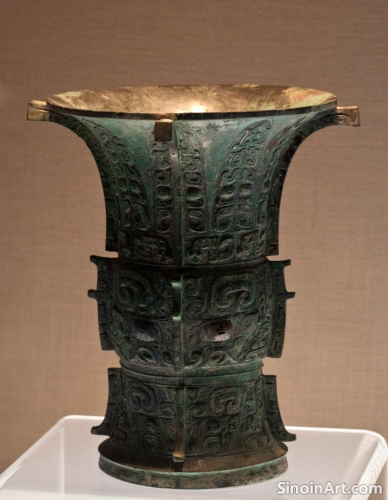The Ethical Implications of Owning and Displaying Looted Chinese Bronze Ware
|
The possession and display of looted or illegally obtained Chinese bronze ware raises important ethical questions, particularly with regard to cultural heritage, provenance, and the responsibility of collectors and museums. The careful consideration of the history of these objects is an essential aspect of ethical ownership.  The removal of bronze artifacts from their original archaeological context results in a loss of valuable information and damages the cultural heritage of China. The unearthing and removal of these items from their original sites is a great loss to both the archaeological and artistic worlds. These objects also often become removed from their cultural and historical meaning, and are often reduced to mere commercial objects.  The display of looted or illegally obtained bronze ware can also perpetuate unethical collecting practices, encouraging further looting and damaging the integrity of archaeological sites. The display of illegally obtained pieces is often a powerful incentive for further looting and illegal acquisition. The support for these illegal activities should be carefully considered.  The responsibility of collectors and museums is to ensure that all acquisitions of bronze ware are properly documented, ethically sourced, and displayed with respect for their cultural and historical significance. This careful adherence to ethical and legal codes is essential for the responsible collection and study of these pieces. The study and display of Chinese bronze ware requires a constant awareness of the ethical dimensions of provenance, ownership, and cultural heritage, ensuring that these treasures are properly preserved and understood with respect and care. The care taken in the display and the provenance of these works is essential to the responsible treatment of cultural treasures. |
Tag : looted bronze, artifact ownership, museum ethics, cultural heritage, provenance
Related information
- Bronze Mirrors and Ancient Chinese Beliefs About the Soul: Reflection and Transformation
- The Role of Bronze in Ancient Chinese Agriculture: Tools, Irrigation, and Food Production
- Bronze Ware and the Ancient Chinese Understanding of Material Science: Alloys, Properties, and Applications
- Bronze Ware and the Development of Ancient Chinese Music Theory: The Role of Tuned Instruments
- Bronze Ware and Ancient Chinese Beliefs About Immortality: The Quest for Everlasting Life
This article explores the connection between bronze mirrors and ancient Chinese beliefs about the soul, highlighting their role as guides in the afterlife, their association with spiritual transformation, and the belief that they could capture and preserve the soul's essence.
This article explores the role of bronze in ancient Chinese agriculture, highlighting its use in creating more effective tools, developing irrigation systems, improving food processing, and its contribution to greater agricultural efficiency and economic development.
This article explores the connection between bronze ware and ancient Chinese material science, highlighting the understanding of alloys, their properties, and their applications, and demonstrating the technical expertise of the ancient metalworkers.
This article explores the influence of bronze ware on the development of ancient Chinese music theory, highlighting the role of tuned instruments, especially bianzhong bells, and their impact on scales, harmonies, and the understanding of musical structure.
This article explores the connection between bronze ware and ancient Chinese beliefs about immortality, highlighting how mirrors, vessels, and symbolic designs were used to ensure the well-being of the deceased, and to help with their passage to an eternal existence.